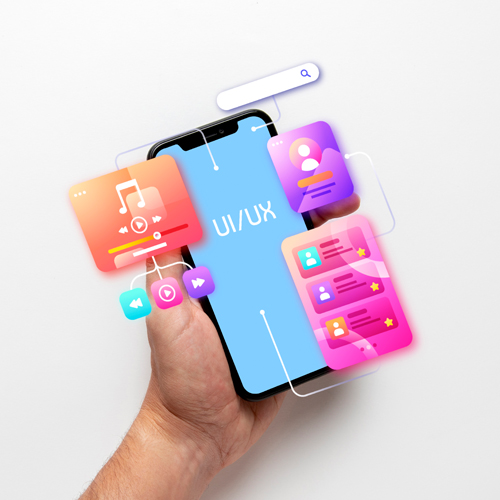As we continue into 2025, the importance of effective User Experience (UX) and User Interface (UI) design cannot be overstated. With rapid technological advancements and shifting user expectations, adopting best practices in UX/UI design is essential for creating engaging and intuitive digital experiences. This blog explores key practices that designers should embrace to stay ahead in the evolving landscape of UX/UI design.
1. Focus on Real-Time Content Integration
Real-time content integration is becoming a crucial element in UX/UI design, allowing users to access live updates and dynamic information. This trend is particularly relevant for platforms that rely on timely data, such as social media, news, and e-commerce sites.
Benefits of Real-Time Content:
Enhanced Engagement: Users are more likely to interact with content that updates in real-time, keeping them engaged longer.
Informed Decision-Making: Providing users with up-to-date information enables them to make better choices quickly.
Increased Sharing Potential: Real-time updates can encourage users to share content, amplifying reach and engagement.
By incorporating real-time content into your designs, you can create a more interactive and relevant user experience.
2. Implement Immersive Scrolling Techniques
Immersive scrolling, often referred to as “scrollytelling,” is a design technique that allows designers to present content in a narrative format through smooth scrolling animations. This approach can captivate users by guiding them through a story or journey as they scroll.
Key Considerations:
Strategic Content Display: Use immersive scrolling to highlight key messages or features while maintaining user interest.
Smooth Transitions: Ensure animations are fluid and enhance the storytelling aspect without causing distractions.
Brand Alignment: Tailor immersive scrolling experiences to align with your brand identity and marketing goals.
By leveraging immersive scrolling techniques, you can create captivating narratives that encourage deeper user engagement.
3. Utilize Bold Color Schemes
Bold color choices are making a significant comeback in UX/UI design, with designers embracing vibrant palettes and gradients reminiscent of past decades. These eye-catching designs can evoke emotions and draw users’ attention to critical elements on the page.
Design Tips:
Contrast for Impact: Use contrasting colors to highlight important buttons or calls-to-action, making them stand out.
Nostalgic Elements: Incorporate retro color schemes that resonate with users on an emotional level.
Dynamic Gradients: Apply gradients strategically to add depth and motion to your designs, enhancing visual appeal.
By utilizing bold color schemes, you can create visually striking interfaces that capture user interest.
4. Embrace Biometric Authentication
As security concerns grow, biometric authentication methods are becoming increasingly popular in UX/UI design. This technology offers a seamless way for users to access their accounts without relying on traditional passwords.
Advantages of Biometric Authentication:
Enhanced Security: Biometric methods such as fingerprint scanning or facial recognition provide a higher level of security compared to passwords.
User Convenience: Users appreciate the ease of logging in without remembering complex passwords.
Streamlined Experience: Integrating biometric authentication can simplify the login process, improving overall user satisfaction.
By incorporating biometric authentication into your designs, you can enhance security while providing a convenient user experience.
5. Prioritize Dark Mode Options
Dark mode has gained popularity as an alternative interface option that reduces eye strain and enhances readability, especially in low-light environments. In 2025, offering dark mode as a design option will become increasingly important for user satisfaction.
Key Benefits:
Reduced Eye Strain: Dark mode provides a more comfortable reading experience for users who prefer softer lighting.
Battery Efficiency: For OLED screens, dark mode can help conserve battery life by using less power.
User Preference: Many users actively seek out apps and websites that offer dark mode options for aesthetic and functional reasons.
By prioritizing dark mode options in your designs, you cater to user preferences while enhancing usability.
Conclusion
As we navigate through 2025, embracing best practices in UX/UI design is vital for creating compelling digital experiences. By focusing on real-time content integration, implementing immersive scrolling techniques, utilizing bold color schemes, embracing biometric authentication, and prioritizing dark mode options, designers can craft interfaces that resonate with users and meet their evolving needs.
Staying ahead of these trends will empower designers to enhance user satisfaction while driving engagement and retention. By adopting these best practices in UX/UI design, organizations can ensure they remain competitive in an ever-changing digital landscape. Embracing innovation while prioritizing user experience will be key to success in the future of design.

